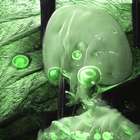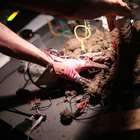Splinterfields: Electromagnetickal Arts
Electromagnetic fields can have adverse effects on living organisms - honeybees are especially sensitive. Although urban environments provide beneficial habitats for bee colonies, concentrations of electromagnetic fields can disturb the bees’ orientation and communication capabilities. To assist city bees with this issue, participants can work on an interference-free foraging map. Detectors for both high and low electromagnetic frequencies can steer through gradients of signal intensity. Detailed contour maps can be constructed using DIY equipment during city walks, visualising the situation across diverse city locales. Simple experiments provide insights into complex wave interactions; offering a view of “spectral ecologies” and their relation to visible architecture and habitats. Participants get an intro into the social behaviour of honeybees, their communication, hive structures and materials used in beekeeping, as well as work on construction plans and new designs for DIY tools for electromagnetic field visualisations during expeditions in the city of Brussels.
Get inspired for a new series of Brussels postcards and an interference-free foraging map for Brussels honeybees. Aims of the workshop are to understand electromagnetic waves and gain a feel for their complex interactions in the city and their impact on living systems; to explore the possibility of making the “invisible” fields and their subtle changes over time and space both visible and audible. This will include an exploration of electromagnetic fields in Brussels and incorporate a basic understanding of honeybees and working with beekeeping materials.
Images from the workshop: http://www.flickr.com/photos/foam/sets/72157625582022890/with/5254352478/





